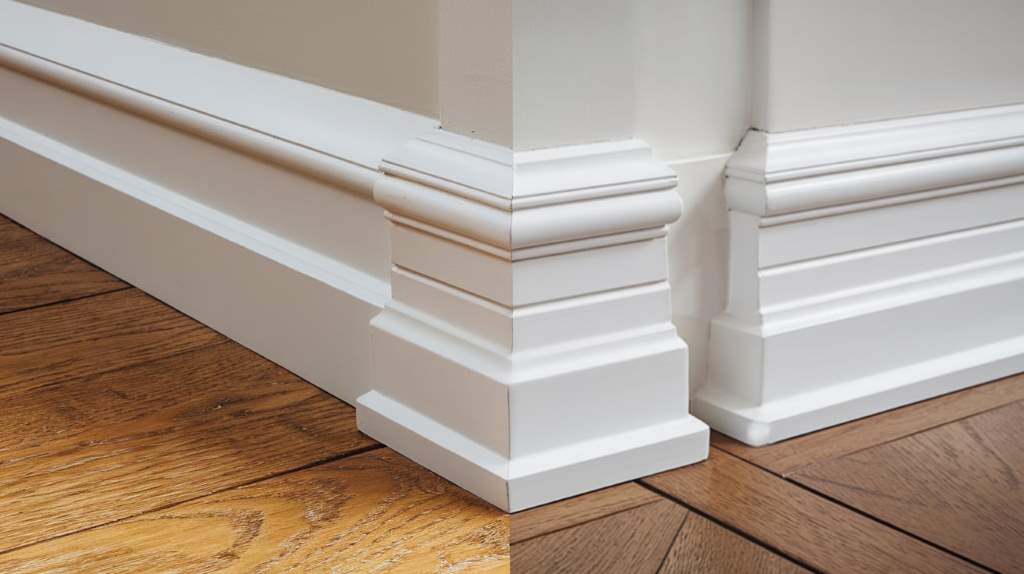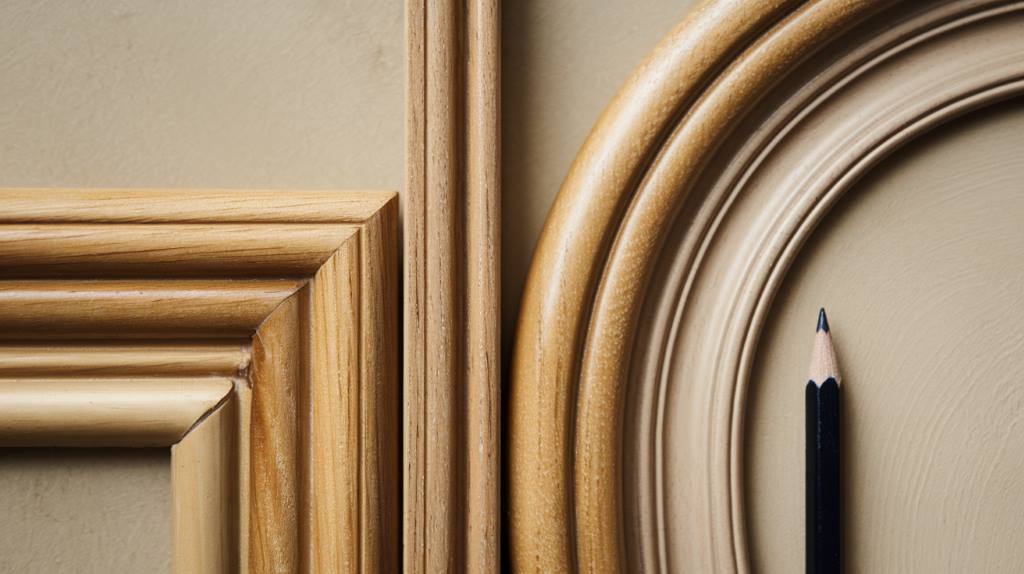When it comes to perfecting your home’s trim work, the debate between shoe molding vs quarter round often arises. Both options offer clean, professional finishes, but their subtle differences can dramatically impact your space’s aesthetics and functionality. In this comprehensive guide, we’ll explore the nuances of shoe molding and quarter round, helping you make an informed decision for your next project.
What is Shoe Molding?
Shoe molding is a narrow, rounded trim piece typically installed at the base of baseboards to cover gaps between the floor and wall. Its name comes from its ability to “hug” the floor, much like a shoe hugs your foot.
Key Features of Shoe Molding
- Size and Shape: Thinner than quarter round, with a flatter back and a slight curve.
- Purpose: Excellent for bridging uneven surfaces between the floor and the baseboard.
- Materials: Commonly made from wood, MDF, or PVC.
Benefits of Shoe Molding
- Subtle Appearance: Its smaller profile ensures it blends seamlessly without overpowering the room’s design.
- Flexibility: Ideal for use on uneven flooring surfaces such as hardwood or tile.
- Durability: Available in moisture-resistant materials, making it suitable for bathrooms and kitchens.
What is Quarter Round?
Quarter round, as the name suggests, resembles a quarter-circle in its cross-section. It is also installed at the base of baseboards but has a slightly larger, more pronounced profile than shoe molding.
Key Features of Quarter Round
- Size and Shape: Larger, with a perfect quarter-circle curve.
- Purpose: Adds a decorative touch to floor-to-wall transitions.
- Materials: Comes in wood, vinyl, or composite materials.
Benefits of Quarter Round
- Decorative Appeal: The bold curve can add a classic and finished look to a room.
- Ease of Installation: Its standard shape makes it easy to cut and fit.
- Versatility: Works well in both modern and traditional interiors.

Shoe Molding vs Quarter Round: Key Differences
| Feature | Shoe Molding | Quarter Round |
|---|---|---|
| Size | Narrower and less pronounced | Larger with a bold curve |
| Aesthetic | Subtle and minimalist | Decorative and traditional |
| Best Use Case | Uneven flooring or subtle design | Bold finishing touch |
| Materials | Wood, MDF, PVC | Wood, vinyl, composite |
| Flexibility | More adaptable to floor imperfections | Less flexible due to size |
When to Choose Shoe Molding
Shoe molding is the go-to choice when you need a practical yet discreet solution. It’s perfect for homes with modern or minimalist designs, where clean lines and functionality are key. If your flooring has minor imperfections or uneven edges, shoe molding does a superior job of hiding them without drawing attention.
Ideal Scenarios for Shoe Molding
- Installing new hardwood floors that may expand or contract.
- Covering subtle gaps in tile or laminate flooring.
- Enhancing small spaces where large trims might feel overpowering.
When to Choose Quarter Round
Quarter round is ideal for homeowners seeking a bolder, decorative statement. Its larger profile and distinctive curve can complement classic or traditional interiors beautifully.
Ideal Scenarios for Quarter Round
- Restoring historic homes with traditional aesthetics.
- Adding visual weight to rooms with tall baseboards.
- Enhancing rooms with intricate moldings or crown trim.
Cost Comparison: Shoe Molding vs Quarter Round
When it comes to pricing, the difference between shoe molding and quarter round often lies in the material and size.
- Shoe Molding: Typically more affordable due to its smaller size and lower material costs.
- Quarter Round: Can be slightly pricier, especially when made of hardwood or premium materials.
For a 12-foot piece, expect to pay:
- Shoe Molding: $1–$3 (depending on material)
- Quarter Round: $2–$5
Installation Tips for Shoe Molding and Quarter Round
Whether you’re a seasoned DIYer or hiring a professional, proper installation is crucial for achieving a polished finish.
Tools Needed
- Miter saw for precise cuts.
- Nail gun or hammer for secure attachment.
- Caulk for seamless joints.
Step-by-Step Installation
- Measure the perimeter of the room accurately.
- Cut the trim pieces at a 45-degree angle for corners.
- Secure the molding with finishing nails or a nail gun.
- Apply caulk to fill gaps and paint as needed.
Pros and Cons of Each Option
Shoe Molding Pros
- Lightweight and easy to handle.
- Great for uneven floors.
- Subtle design suits modern spaces.
Shoe Molding Cons
- Less visually impactful in large rooms.
Quarter Round Pros
- Enhances traditional designs.
- Sturdy and long-lasting.
Quarter Round Cons
- May look too bulky in small spaces.
Shoe Molding vs Quarter Round: Which One Wins?
The choice ultimately boils down to personal preference and the specific needs of your space. For a sleek, understated look, shoe molding takes the lead. If you prefer a bold, decorative finish, quarter round might be the better choice.
Conclusion
Choosing between shoe molding vs quarter round doesn’t have to be complicated. By understanding their unique features, benefits, and ideal applications, you can select the trim that perfectly complements your space. Whether you lean toward the subtle elegance of shoe molding or the bold statement of quarter round, your choice will add the finishing touch that ties your entire room together.




